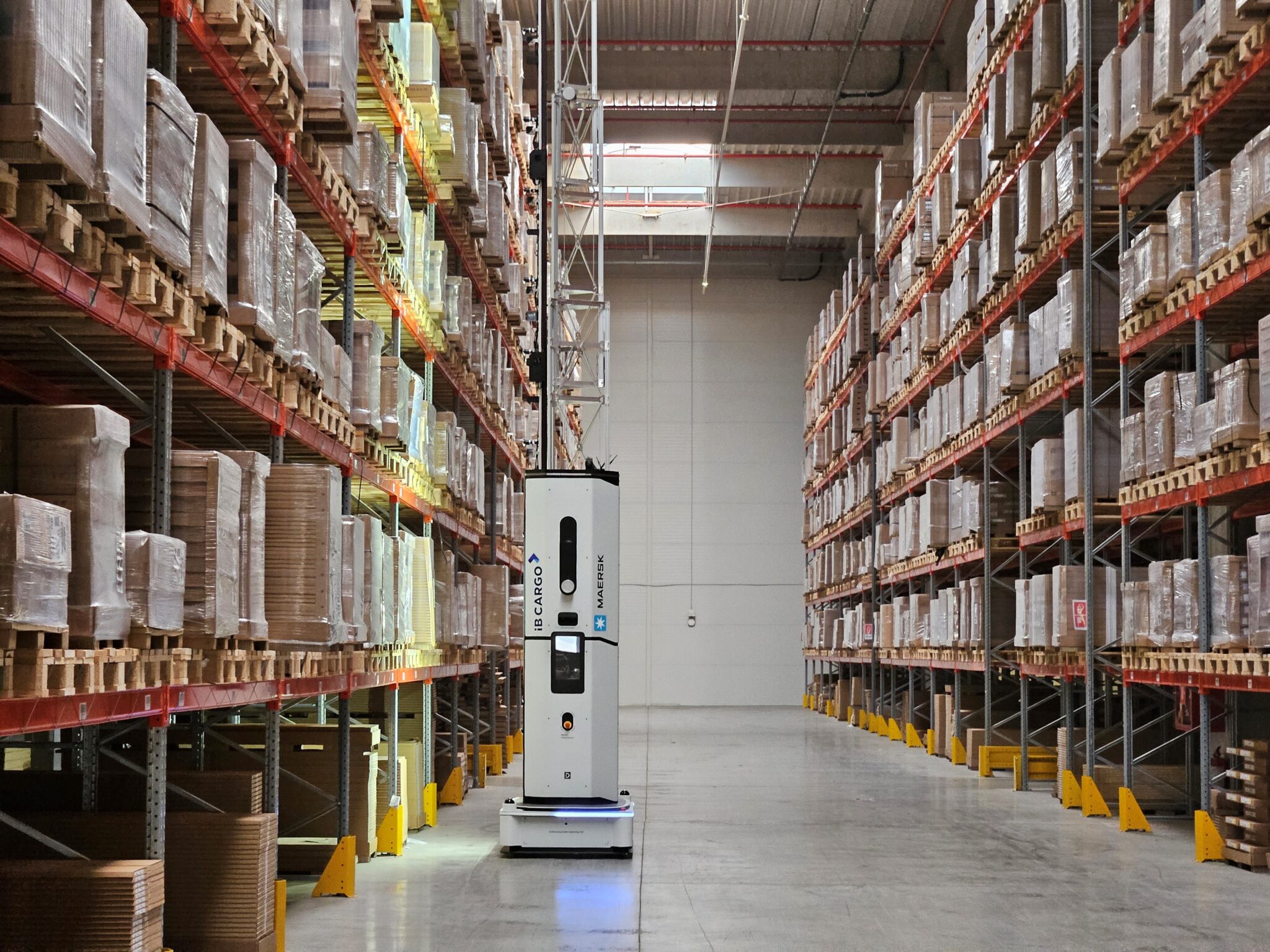Dexory has announced today that their global partnership with Maersk is expanding into the Maersk and iB Cargo managed site in Romania, a distribution centre for a top home furnishing brand globally. The Bucharest deployment is the first of many outside of the UK to go live with the innovative technology, as part of the company’s expansion across Europe.
A. P. Moller – Maersk & iB Cargo operate a major distribution and logistics centre in Romania, serving one of the largest global furniture and interior decoration companies. For the first time in Romania, the two partners announce the deployment of Dexory’s technology and robots, in order to maximise and streamline the use of the centre, optimise its resources and shelf space.
The warehouse operated by A.P. Moller – Maersk & iB Cargo opened in September 2021 with 76,000 sqm, and less than 2 years later, it expanded to 100,000 sqm, offering customised logistics solutions and serving 8 countries in Europe and the Balkans. The unit is located in the CTPark Bucharest West industrial park and is BREEAM certified.
The robot called ‘NEO’ operates daily at the site in Bolintin-Deal, Romania, scanning over 100,000 pallet locations – allowing operations to move from 150 locations/h, with the current processes, to 10,000 locations/h via automation. It covers wide, narrow and hard to navigate aisles, reserve and picking locations – which is a time-consuming and prone to human error process, integrating into the day-to-day warehouse operations, working alongside the warehouse teams 24/7.
Dexory, the logistics start-up founded by Andrei Danescu, Oana Jinga and Adrian Negoita in London, is already working with Maersk in the UK and Ireland. This expansion into new territories is a great enabler of Maersk’s commitment to integrating new technologies as well as to sustainability.
Dexory’s unique solution combines hardware and software to provide instant visibility into inventory and operations at the click of a button. Using 12-metre-tall autonomous robots to capture warehouse data and images in real-time, the revolutionary digital twin technology enables instant analysis of stock, occupancy and stock movement.
The digital twin then offers instant access to the data captured, highlighting any discrepancies with other warehouse systems in an intuitive, easy-to-access digital format. The analytics extracted address operational bottlenecks, increase efficiencies (allowing for faster put-away and picking) and unlock powerful insights into site operations (for real-time occupancy fluctuation, route planning) – all of which used to be manually done before. Using AI it then provides companies with information to forecast and plan more accurately across their warehouse estate and have smarter management of their workforce.
Andrei Danescu, Chief Executive Officer & Co-founder of Dexory comments: “We are thrilled to collaborate with Maersk and iB Cargo and bring the power of real-time data and insights to this impressive site in Romania, supporting a powerful company in interior decorations. Teams across the board have already embraced the Dexory technology and are constantly using our digital twin to make more informed decisions and drive efficiency.”
“Our business model is about long-term partnerships. We build them through quality, integrity and bringing added value to our clients’ businesses through innovative solutions at every level.”, shared Cătălin Putineanu, Founder and Managing Partner of iB Cargo.
Dragos Dumitrescu Country Manager Maersk Romania, “Maersk remains steadfast in its unwavering commitment to implementing cutting-edge technology across its operations, reinforcing its position as an industry leader at the forefront of innovation. Embracing the latest advancements, Maersk continues to drive efficiency, enhance sustainability, and deliver exceptional value to its customers while shaping the future of global trade”.



